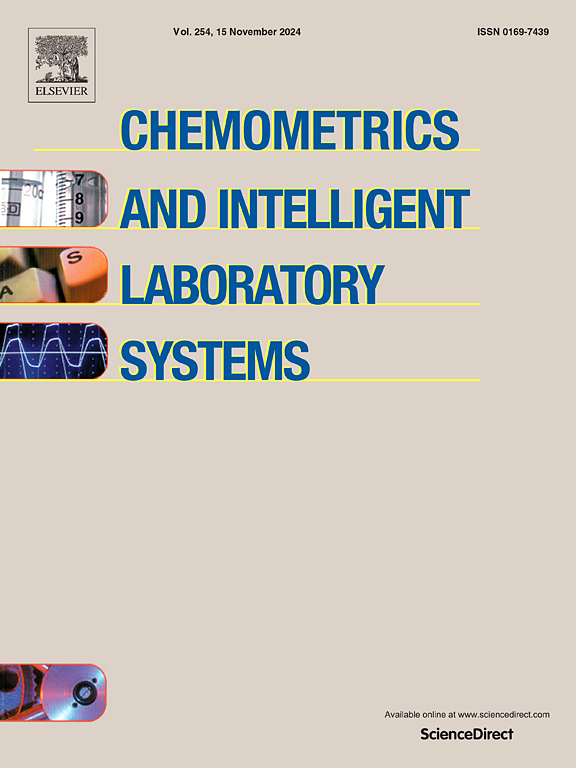An enhanced multilayer Res-Informer with Savitzky-Golay filter for predicting mixed CO and NOx emissions in gas turbines
IF 3.8
2区 化学
Q2 AUTOMATION & CONTROL SYSTEMS
Chemometrics and Intelligent Laboratory Systems
Pub Date : 2025-03-11
DOI:10.1016/j.chemolab.2025.105379
引用次数: 0
Abstract
Gas turbines emit large amounts of carbon monoxide (CO) and nitrogen oxides (NOx) when working, and the emission of CO and NOx poses serious harm to human health and environment. Therefore, accurately predicting CO and NOx emissions from gas turbines is of great significance. Traditional machine learning algorithms have significant drawbacks in handling long time series data. They typically require complex feature engineering to manage time dependencies, the modeling process is cumbersome and time-consuming, and they are limited in capturing nonlinear features and handling high-dimensional data, as well as effectively dealing with noise and non-stationarity in data. To address these issues, this study proposes an enhanced SGM-ResInformer. This method combines the characteristics of Density-Based Spatial Clustering of Applications with Noise (DBSCAN), Savitzky-Golay filter, multilayer residual network (M-ResNet), and an improved Informer. Data denoising is performed using DBSCAN and Savitzky-Golay filters, M-ResNet enhances the extraction of complex features, better capturing nonlinear relationships in the data, and in the Informer, the original simple MaxPool1d layer in the self-attention distillation layer is replaced with a learnable convolutional layer for attention distillation operations. Experimental results show that compared to the traditional Informer model, the mean square error (MSE) of SGM-ResInformer is reduced by 44.26 %, indicating a significant performance improvement. Compared with other advanced algorithms like Autoformer, SG-informer, Transformer, and LSTM, SGM-ResInformer also shows varying degrees of improvement. Overall, the model excels in improving prediction accuracy, stability, adaptability, and generalization ability, making it particularly suitable for multi-step prediction tasks of complex time series data. These advantages make the model significantly outstanding in the task of predicting emissions from gas turbines.
一种带Savitzky-Golay滤波器的多层Res-Informer用于预测燃气轮机CO和NOx的混合排放
燃气轮机在工作时排放大量的一氧化碳(CO)和氮氧化物(NOx), CO和NOx的排放对人体健康和环境造成严重危害。因此,准确预测燃气轮机CO和NOx排放具有重要意义。传统的机器学习算法在处理长时间序列数据方面存在明显的缺陷。它们通常需要复杂的特征工程来管理时间依赖性,建模过程繁琐且耗时,并且它们在捕获非线性特征和处理高维数据以及有效处理数据中的噪声和非平稳性方面受到限制。为了解决这些问题,本研究提出了一种增强型SGM-ResInformer。该方法结合了基于密度的带噪声应用空间聚类(DBSCAN)、Savitzky-Golay滤波、多层残差网络(M-ResNet)和改进的Informer的特点。使用DBSCAN和Savitzky-Golay滤波器对数据进行去噪,M-ResNet增强了对复杂特征的提取,更好地捕捉数据中的非线性关系,在Informer中,将自注意蒸馏层中原来简单的MaxPool1d层替换为可学习的卷积层进行注意蒸馏操作。实验结果表明,与传统的Informer模型相比,SGM-ResInformer模型的均方误差(MSE)降低了44.26%,性能有了显著提高。与Autoformer、SG-informer、Transformer、LSTM等先进算法相比,SGM-ResInformer也有不同程度的改进。总体而言,该模型在提高预测精度、稳定性、适应性和泛化能力等方面表现突出,特别适用于复杂时间序列数据的多步预测任务。这些优点使得该模型在预测燃气轮机排放的任务中非常突出。
本文章由计算机程序翻译,如有差异,请以英文原文为准。
求助全文
约1分钟内获得全文
求助全文
来源期刊
CiteScore
7.50
自引率
7.70%
发文量
169
审稿时长
3.4 months
期刊介绍:
Chemometrics and Intelligent Laboratory Systems publishes original research papers, short communications, reviews, tutorials and Original Software Publications reporting on development of novel statistical, mathematical, or computer techniques in Chemistry and related disciplines.
Chemometrics is the chemical discipline that uses mathematical and statistical methods to design or select optimal procedures and experiments, and to provide maximum chemical information by analysing chemical data.
The journal deals with the following topics:
1) Development of new statistical, mathematical and chemometrical methods for Chemistry and related fields (Environmental Chemistry, Biochemistry, Toxicology, System Biology, -Omics, etc.)
2) Novel applications of chemometrics to all branches of Chemistry and related fields (typical domains of interest are: process data analysis, experimental design, data mining, signal processing, supervised modelling, decision making, robust statistics, mixture analysis, multivariate calibration etc.) Routine applications of established chemometrical techniques will not be considered.
3) Development of new software that provides novel tools or truly advances the use of chemometrical methods.
4) Well characterized data sets to test performance for the new methods and software.
The journal complies with International Committee of Medical Journal Editors'' Uniform requirements for manuscripts.

 求助内容:
求助内容: 应助结果提醒方式:
应助结果提醒方式:


